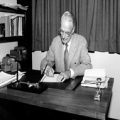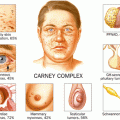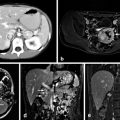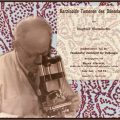Edwin H Ellison. Ellison Library Archives, Department of Surgery, Medical College of Wisconsin
Edwin H. Ellison was born in Dayton, OH, September 4, 1918. His father was a chemist and his mother was a school teacher. His father died during the influenza epidemics when “Eddie,” as he was known by his friends, was only a youngster. He and his mother moved to Columbus, OH, where he resided for the next 25 years attending public schools, Ohio State University (BA 1939) and Ohio State College of Medicine (MD Cum Laude 1943). During the ensuing busy, sometimes chaotic years of World War II (WWII) and residency training, Dr. Ellison managed to complete all the requirements for a PhD in biochemistry.
Early in his training as an Ohio State University Hospital rotating intern and junior resident (1943–1946), no doubt in part because of his background in biochemistry, he developed an early interest in surgical nutrition and peptic ulcer disease. This era was several decades before the characterization and precise measurements of gastrointestinal peptide hormones, the advent of effective antacid blockers and radiologic techniques such as computed tomography (CT) scans. Rather crude measurements of gastric acid secretion, such as an overnight gastric aspiration, often with the house officer at the bedside to maintain patency of the nasogastric tube, was the primary metric measured. His surgical residency training was interrupted by two years of military service and he was stationed from 1946 to 1948 at Fort Ord California where he was chief of the surgical section.
Ellison returned to Ohio State University Hospital to complete a final and then a super chief resident year in surgery (1950–1951) under Dr. Robert Zollinger , Dr. Ellison was one of the first surgical faculty hired by Dr. Zollinger, who had recently returned from overseas WWII duty in Europe to be the new department chairman. The Ohio State surgical training program was organized along the Halstedian model, along the lines developed by Dr. Harvey Cushing and Dr. Elliot Cutler, with whom Dr. Zollinger had worked first as a resident and then a junior faculty member at the Brigham Hospital before World War II. Dr. Cushing had been a Halsted resident before going to the Brigham Hospital in Boston and the Halsted training program influences on training surgeons passed through Drs. Cushing/Cutler to Zollinger and then to Ellison.
During his tenure at Ohio State University Hospital from 1951–1958, Ellison advanced in rank to full-time professor. He and Dr. Zollinger both had busy clinical practices and collaborated together on numerous research projects. Nutrition in the surgical patient and finding the best operation for peptic ulcer diseases were areas of interest. Dr. Ellison was one of the early authorities in nutrition, blood substitutes, as well as fluid and electrolyte balance. He was an early pioneer in bringing the flame photometer to practical use in the care of surgical patients.
As a very junior surgical faculty member, Dr. Ellison’s frustrating clinical experiences with a patient who had recurrent jejunal ulcers, massive gastric acid hypersecretion and failed ulcer operations were observed in the same year (1954) in one of Dr. Zollinger’s patients. These experiences prompted Dr. Ellison to start a study of “jejunal ulcer patients.”
The clinical saga, of jejunal ulcers, in only two patients and the remarkable series of events concerning their care occurring in 1954 led to the discovery of the “Zollinger –Ellison syndrome.” Their hypothesis of an “ulcerogenic humoral factor of pancreatic islet origin” was reported at the 1955 Annual meeting of the American Surgical Association [1]. Not unlike the Princes of Serendip, Zollinger and Ellison had discovered by accident and sagacity something they were not in quest of; they were trying to find a better operation for jejunal ulcers [2]. Their report and hypothesis captured the imagination of and excited surgeons, clinicians, and physiologists worldwide. Details of this remarkable story describing the discovery of the Zollinger–Ellison’s syndrome has been well documented and is a must read for all endocrine surgeons [3].
Dr. Ellison excelled early in his academic career, and his relationship with Dr. Zollinger was close. Their birthdays happened to occur on the same day, September the 4th. Dr. Zollinger had said “Eddie was the answer to the dream of every professor of surgery, a young associate who strived every day to please and indeed, to exceed the teacher… he gave clear evidence that he was a man of great talent and a capacity for work and for leadership” [4]. He received the Man of the Year award from the Ohio State Medical School faculty in 1957.
Dr. Ellison was recognized early as a rising star in academic surgery. He was only 39 years when Marquette University School of Medicine in Milwaukee , Wisconsin (now the Medical College of Wisconsin), initiated a recruitment process to bring him to Milwaukee. He accepted and became the first full-time professor and chairman, Department of Surgery in 1958.
Ellison was a true visionary. A major attraction of the job in Milwaukee was the promise of the imminent development of a university teaching hospital in association with the medical school. Kurtis Froedtert, a wealthy businessman, who produced grains and malt for Milwaukee’s famous beers, had created the trust to build the hospital. However, the Milwaukee academic environment in the early 1960s for the new department chair was to prove most challenging. Marquette University School of medicine had limited resources and there was no medical service plan to generate revenue for the school. The surgery department had no full-time faculty. Research facilities were limited. There were eight Milwaukee hospitals with American College of Surgeons (ACS)-approved independent graduate training programs in general surgery. Several programs were only for 3 years.
Stay updated, free articles. Join our Telegram channel

Full access? Get Clinical Tree







